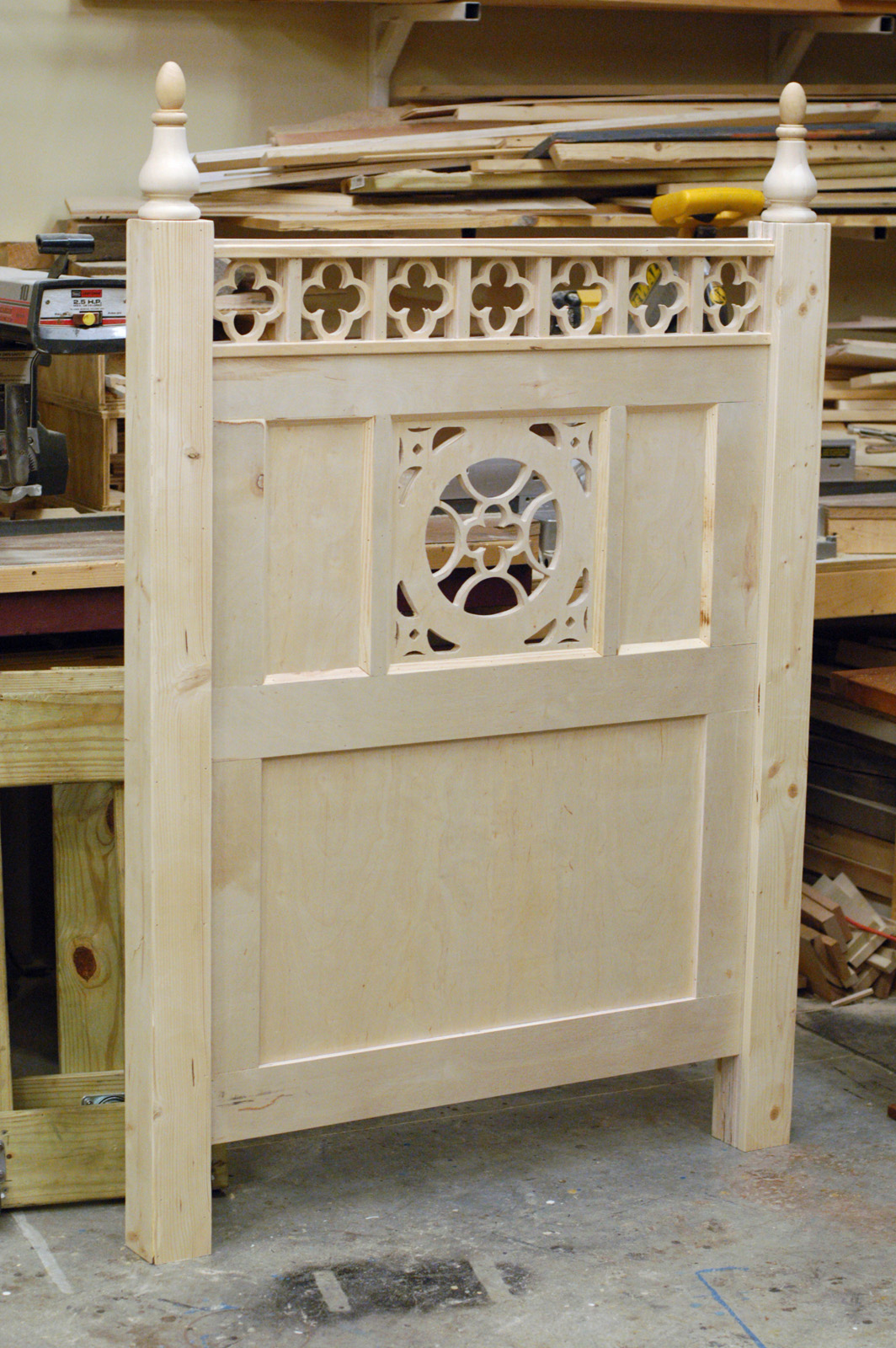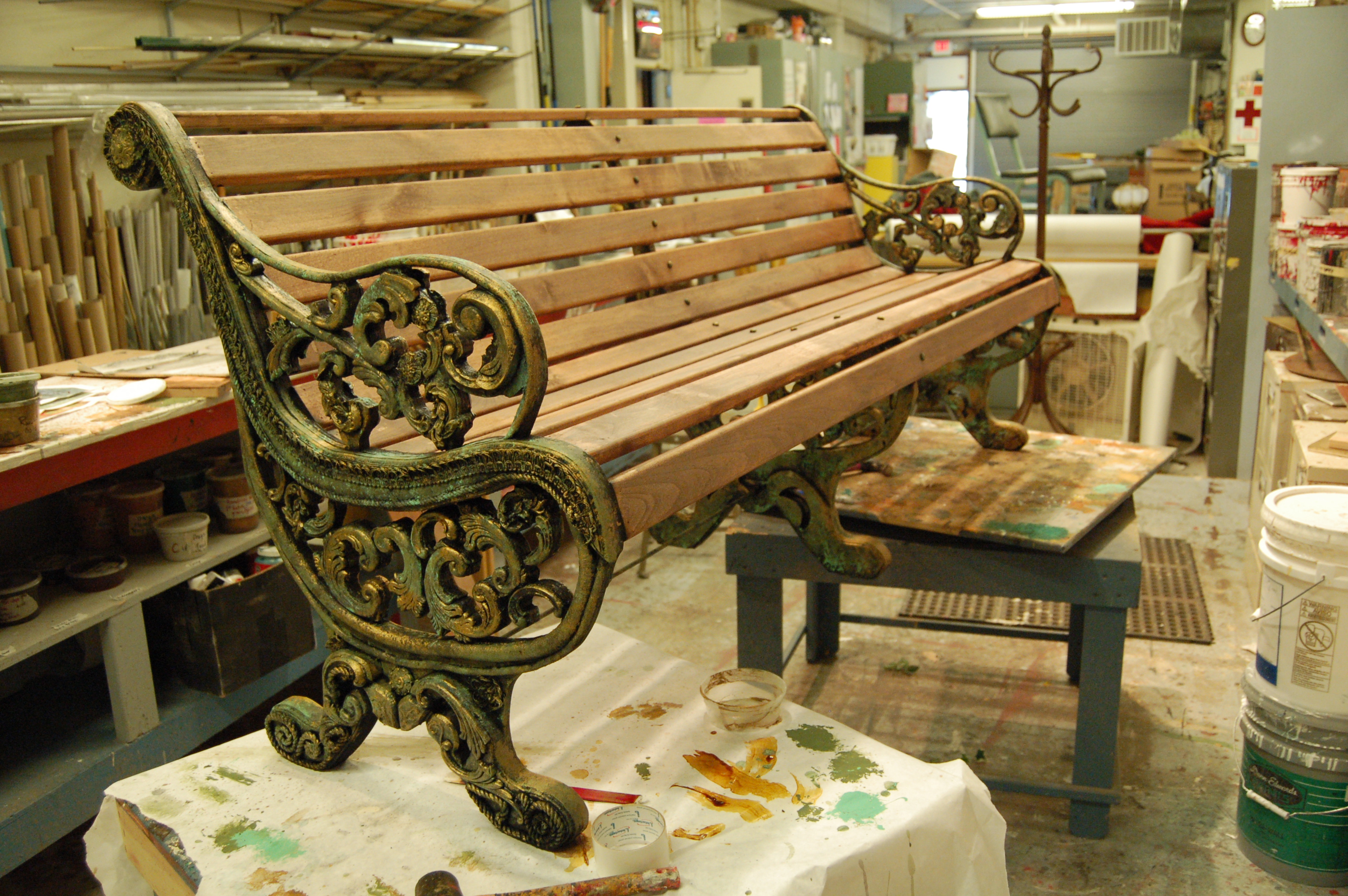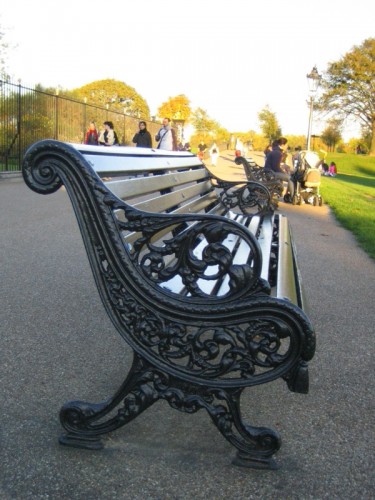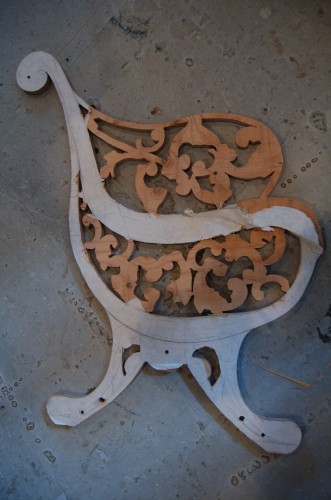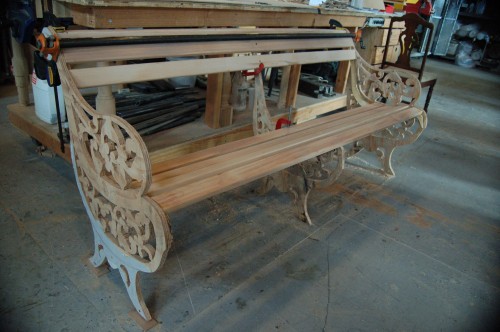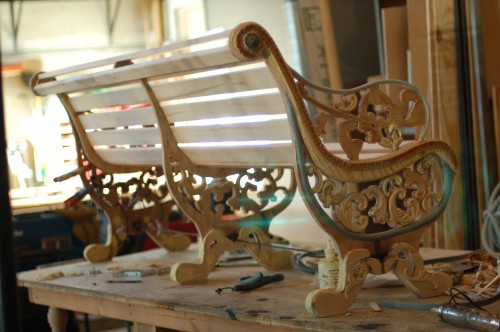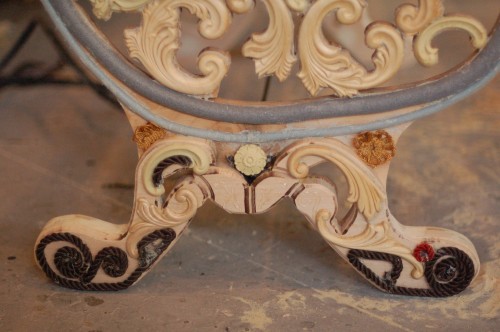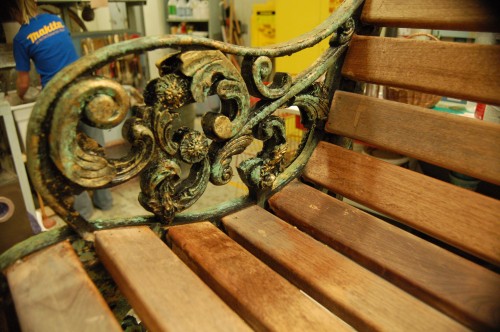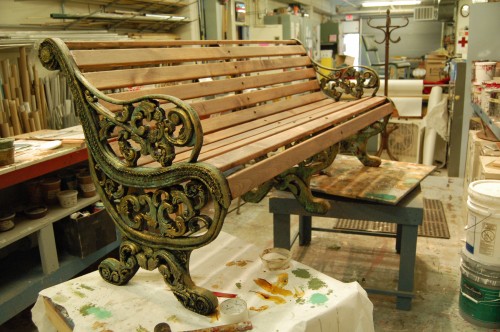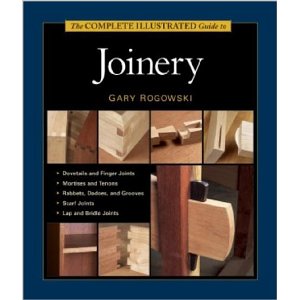I recently finished my first major gig down here in North Carolina. I was building props for the productions of Henry IV and Henry V at PlayMakers Repertory Company in Chapel Hill. It was a lot of fun, and also an interesting change of pace to return to a job where I am building all day without any managerial duties.
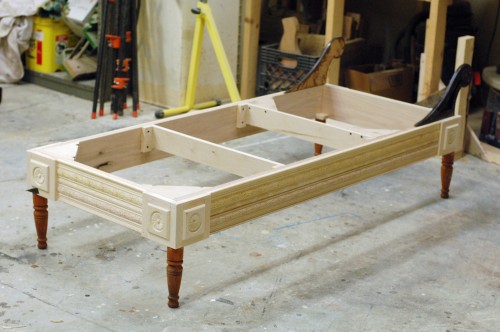
The base for this chaise lounge was fairly straightforward. I began by building a nice sturdy frame out of oak. The design evolved later to a piece which was completely covered in moulding. The oak ended up being completely obscured by all the moulding. Ah, well.
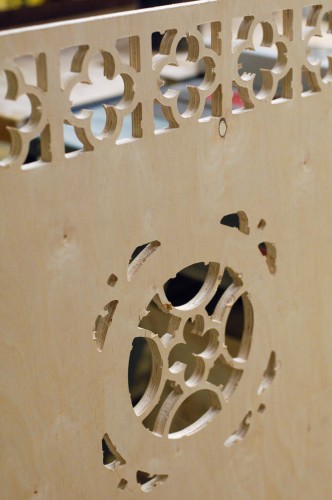
The king’s headboard had a fairly intricate cut-out design, so the props shop sent a piece of 3/4″ plywood to the scene shop to be CNC routed.
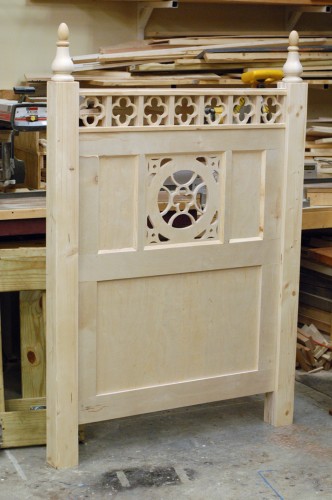
When I got the CNC’d piece back, I cleaned it up and attached some other layers, moulding, posts and finials to make the full headboard.
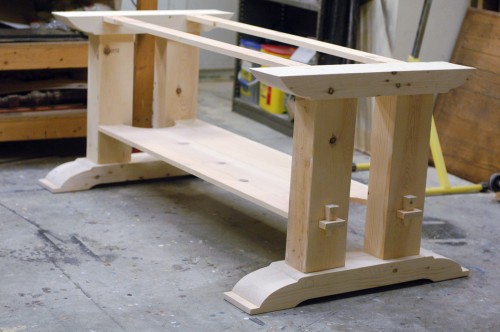
Above is a nice trestle table base I built for the tavern scene. The feet and the pieces on top of the legs are made of solid wood; I had to laminate a few pieces together to get those thicknesses. The legs themselves are actually boxed out, with a two-by-four hidden inside for strength. The wedged tenons on the sides of the legs are just fake pieces glued on the outside.
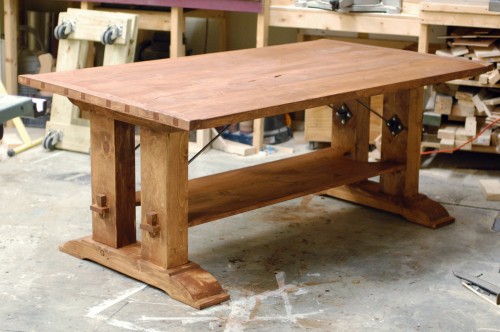
The table top had already been built for the rehearsal piece, so I just had to attach it. The scene shop also added some metal diagonal braces, which were needed to keep the table from collapsing under horizontal forces.
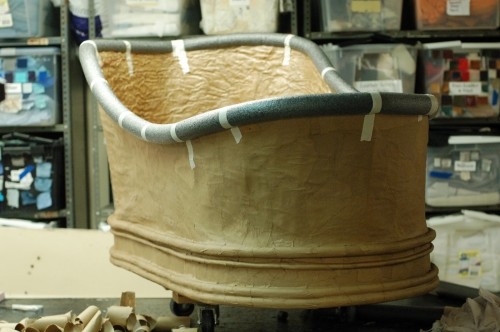
Finally, the props shop was building a hammered copper bath tub out of some good old-fashioned papier-mâché. I jumped on this project in the middle, adding a few layers to what was already started and attaching the large Ethafoam rod along the top. The initial layers were done with an ordinary flour and water paste. The next few layers were done with strips of paper and a product called “Aqua Form” to make it harder and more water-proof. Aqua Form markets itself as a nontoxic water-based polymer which replaces resins for use in laminates; it worked great with the paper, but it also claims it can be used in lieu of resin for fiberglass. I certainly look forward to learning more about it.

